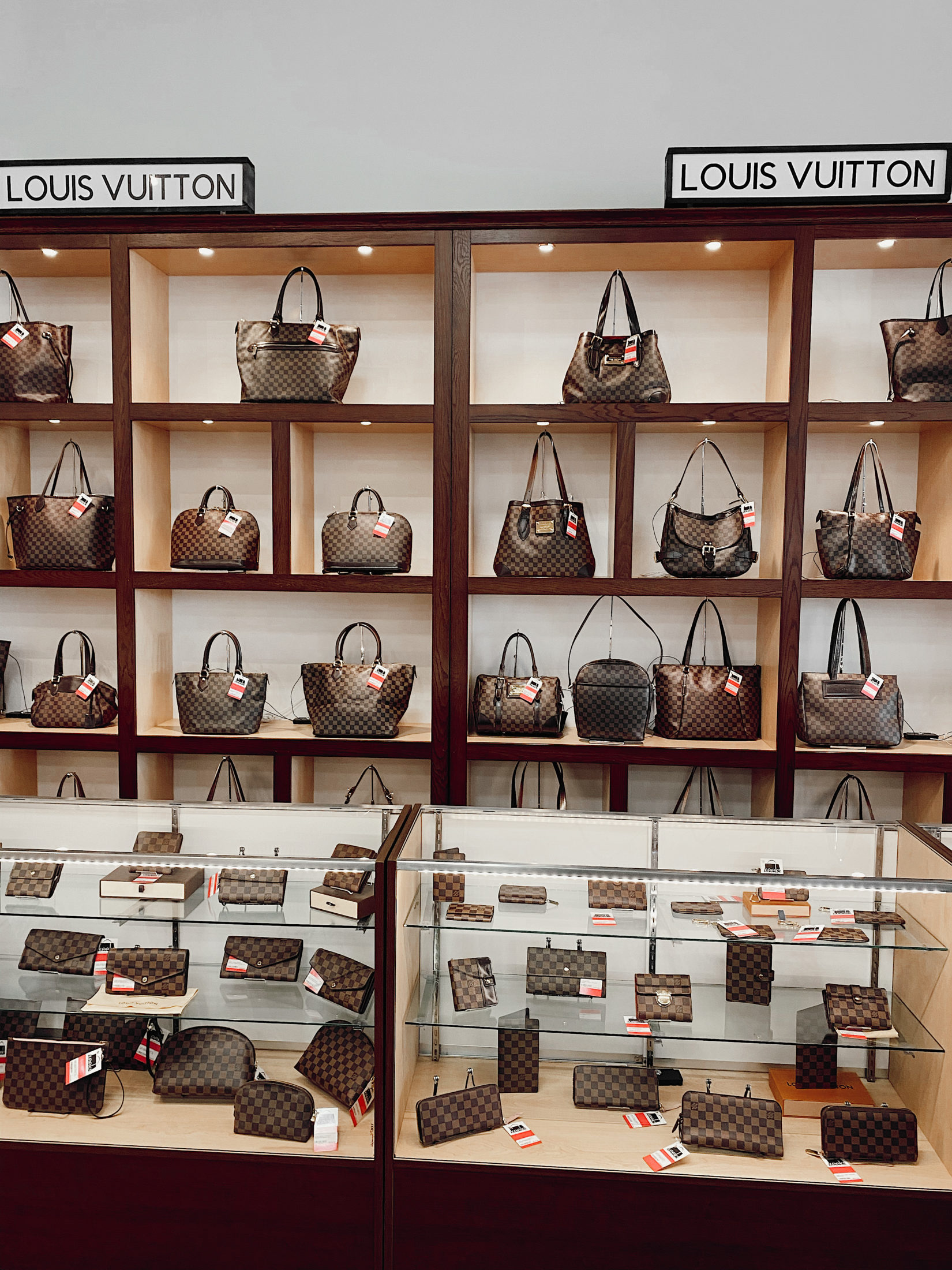

On 1stDibs, the unmistakable insignia can be found on both modern and vintage Louis Vuitton shoulder bags, suitcases, original 19th-century trunks, jackets and more. The LV monogram would soon appear on everything from bags and various fashion accessories to alligator-skin champagne cases, from stylish apparel and earrings to teddy bears and airplane models. It’s one of the earliest examples of fashion branding. The famous LV monogram was first used in 1896 as part of an initiative by Georges to prevent counterfeiting of his coveted new line of travel trunks. It’s only appropriate that it boasts one of the most recognizable insignias - the imaginative interlocking of letters and fleurettes - in the fashion world. The Louis Vuitton brand embodies all the attributes of luxury, from the craftsmanship, exclusivity and relevance to heritage. The largest travel-goods store in the world at the time, it became the company’s flagship. In 1914, a Louis Vuitton store opened at 70 Champs-Élysées. When Louis Vuitton died in 1892, control of the luxury house was passed onto his only son, Georges Vuitton. Travel’s popularity broadened in the late 19th century, and Vuitton’s trunks could easily be packed into train cars and ships - upright trunks meant hanging wardrobe storage that would allow his clients to transport their sophisticated garments without worry. In 1858, Vuitton debuted his lightweight, handcrafted canvas trunks, which were sturdy, rugged and equipped with convenient compartments. The most common trunks of the era were round, which weren’t ideal for toting and storing. Long before his brand would become known globally for its exemplary top-handle bags and stylish totes, Vuitton produced stackable and rectangular trunks.


The craftsman opened a humble workshop on rue Neuve des Capucines and advertised his services with a small poster that read: “Securely packs the most fragile objects. In 1854, Vuitton launched his namesake company. He toiled as a box maker and packer for more than a decade and built relationships with royals and members of the upper class while working for the empress of France, Eugenie de Montijo. When he arrived in Paris, Vuitton made a living with his hands. With stops along the way to make money so that he could forge ahead, the journey took a couple of years, but reward was close at hand. The young Vuitton was 13 at the time and would need to travel on foot to get to the capital, which was hundreds of miles away.
PRE OWNED LOUIS VUITTON HANDBAGS FOR SALE FREE
The company’s modest origins can be traced back to when its founder, Louis Vuitton (1821–92), wishing to free himself from the conventional lifestyle in his provincial French city of Anchay as well as a difficult stepmother, left in the early 1830s to make a new life in Paris. The Amalfitana Galliera gets its name from the Amalfi Coast and is made from Raffia Hemp, detailed with an enlarged version of the monogram.The story behind iconic luxury brand Louis Vuitton - best known for its esteemed handbags, crossbody bags, leather goods, ready-to-wear clothing and more - is one of craft and innovation in the worlds of fashion, jewelry and furniture. The Smeralda Galliera, named after Costa Smeralda in Nothern Sardinia, has a python exterior and lambskin interior. Named after the French Riviera, the eye-catching and colorful Riviera Galliera is crafted from canvas, printed with a motif of said riviera. In 2009 for the Cruise Collection, Louis Vuitton released the three limited-edition styles of Galliera: the Riviera, Smeralda, and Amalfitana. The Damier Azur is a lighter interpretation, inspired by the French Riviera, which debuted in 2006. Since then, the brown pattern has appeared in other colorways, such as the white and grey Azur. Most often, the Monogram Canvas is accentuated with the tan Vachetta cowhide leather, which over time develops a patina.īefore this creation, Georges Vuitton had designed the checkered Damier canvas in 1888 and re-introduced it in 1998 as Damier Ebene. The Monogram Canvas is a bold pattern composed of quatrefoils, flowers, and interlocking Louis Vuitton initials.

Wanting to continue his father’s legacy, Georges Vuitton designed the instantly recognizable Monogram Canvas in 1896.


 0 kommentar(er)
0 kommentar(er)
